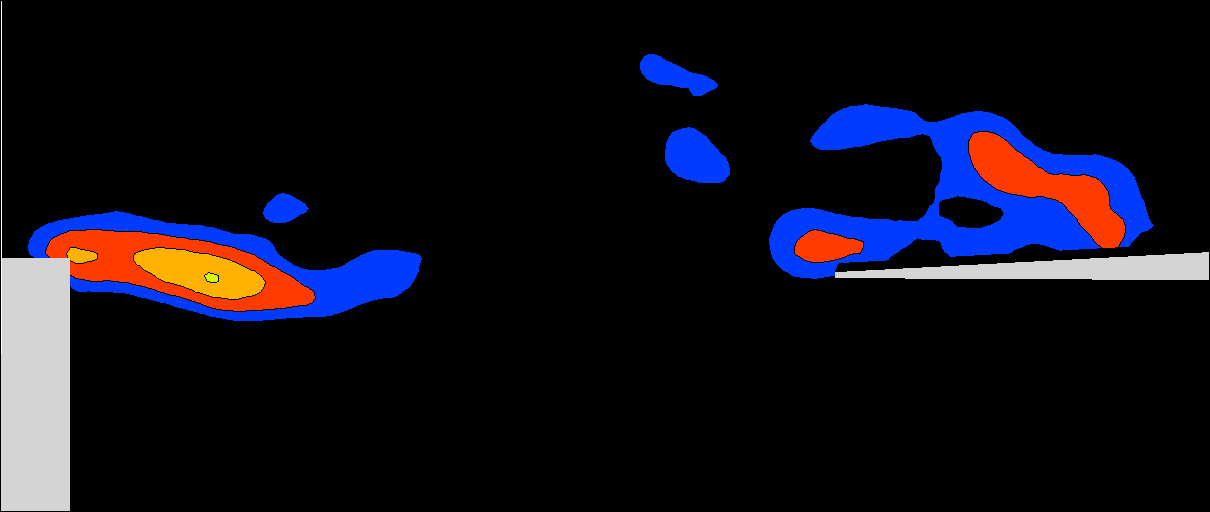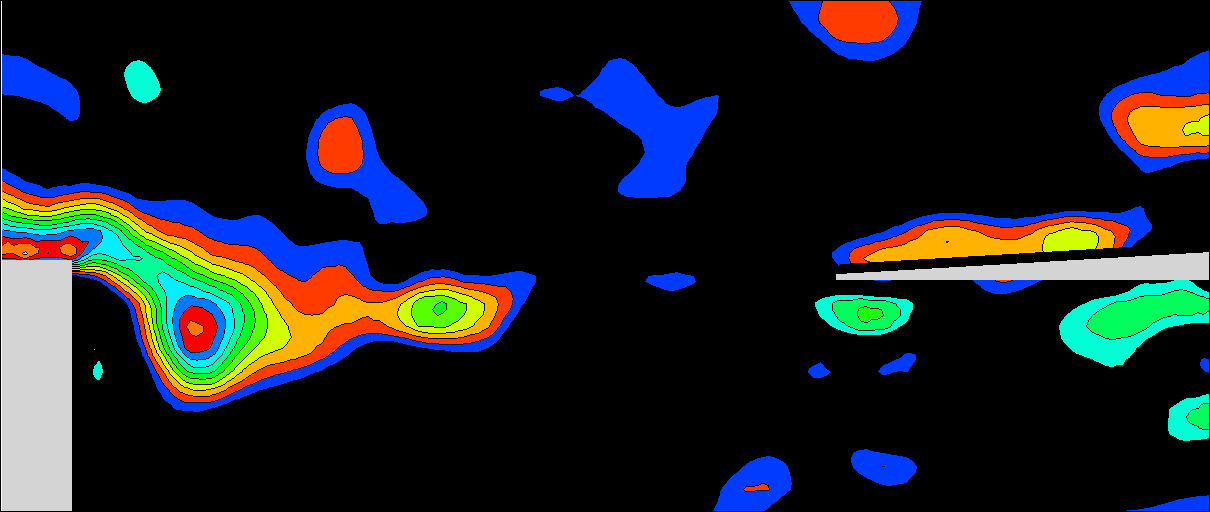Flow-Induced Cavity Resonance and Its Control
Flow over cavity-backed openings can give rise to flow oscillations that are strongly coupled with the acoustic or free-surface resonant-mode of the cavity. Such strong oscillations can lead to vibration in the structural components of the cavity and associated noise generation. Flow-induced cavity resonance is encountered in a variety of systems, such as in the cavities located on the fuselage of an aircraft, the hull of marine vessel, and the ballast tank of a submarine, to name a few.
This project investigates the
means of controlling cavity resonance. So far, flow control through a
slotted plate arrangement plaecd at the mouth of the cavity is tested
for various open area ratios and plate geometries. A cinema technique
of high-image-density PIV is used to characterize the spectral
amplitudes and phase variations on either side of the slotted plate.
This experimental study provided the first detailed characterization of
the flow associated with the fully-coupled oscillations of shear flow
past a resonator cavity in presence of a free surface. As an important
benchmark, the work developed novel criteria for slotted plate design
to suppress flow-driven instabilities and vibrations in cavities. For
further details on the project, interested fellows can check the
following two journal publications: [Link to Journal_1 ],
[Link to Journal_2
],
[Link to Journal_2 ].
].


Movie: The movies above compare the vorticity contours of the shear layer past the cavity openning at non-resonant state at the top and at the resonant state at the bottom. The separating shear layer is horizontal at the non-resonant state. It, however, deflects from the horizontal and forms a large-scale vortical structure at the resonant state. The large-scale vortices periodically impinges onto the end of the cavity, which is a potential for flow-induced vibration of the structure and noise.
Non-Coupled State Marginally-Coupled State Fully-Coupled State

Figure 1: Instantaneus vorticity contours for non-resonant, marginally-resonant and fully-resonant states are given respectively in the first to third columns of images. Flow direction is from left to right. In the top row, patterns of free shear layer past the cavity are provided. For this case, the shear layer forms a large vortical structure as the fully-coupled state is approached. In the bottom row of images, a slotted plate is placed at the cavity openning. In comparison to the structure of the free-shear layer, the spatial extent of large-scale vorticity clusters are reduced in presence of the slotted plate.
Non-Coupled State Marginally-Coupled State Fully-Coupled State

Figure 2: Fluctuating flow structure: The patterns above show the root-mean-square value of the transverse velocity fluctuations normalized with respect to the free-stream velocity for non-resonant, marginally-resonant and fully-resonant states directly corresponding to the images given in Figure 1. In the top row, patterns of free-shear layer past the cavity clearly show the substabtial increase of the peak fluctuation magnitude with increasing degree of coupling. On the other hand, in presence of the slotted plate, given in the second row of images, the peak magnitude of velocity fluctuations are relatively attenuated. Flow control through different geometries of slotted plate arrangements is further investigated in our studies. For further details, please see the journal paper, link to which is provided above.